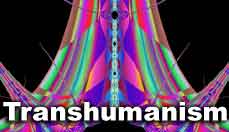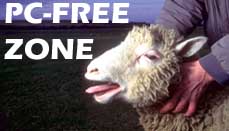Alex Linder Audio Books
Open Letters
Yggdrasil's Library
THE ORION PARTY
The Prometheus League
- Humanity Needs A World Government PDF
- Cosmos Theology Essay PDF
- Cosmos Theology Booklet PDF
- Europe Destiny Essays PDF
- Historical Parallels PDF
- Christianity Examined PDF
News Blogs
Euvolution
- Home Page
- Pierre Teilhard De Chardin
- Library of Eugenics
- Genetic Revolution News
- Science
- Philosophy
- Politics
- Nationalism
- Cosmic Heaven
- Eugenics
- Future Art Gallery
- NeoEugenics
- Contact Us
- About the Website
- Site Map
Transhumanism News
Partners




Lamb, Kevin
Vol. 33, Mankind Quarterly, 01-01-1992, pp 203.
As recently as June 1992, Omni magazine ranked the late British
psychologist Sir Cyril Burt as "one of the top ten frauds of all time". Author
Linda Marsa's article alleged that:
Sir Cyril Burt, a pioneering British psychologist, deliberately made up
more than three decades of data, from the mid 1940s until 1966, to back up his
bogus theory on the relationship between heredity and intelligence. He claimed
human intelligence was 75 percent inherited, thereby reinforcing the British
class system.
But was Burt a fraud? What Omni fails to mention is that the most detailed
accounts to date find no reliable evidence of fraud and conclude that Burt was
wrongly accused.
If any lessons emerge from the Burt case it is that social ideology can
ruin a scholar's reputation and that the media often distort behavioral
science controversies. The media's account of Burt rests on what was assumed
to be proven, that Burt invented IQ data and that his alleged fraud is no less
a deception than the Piltdown hoax. Burt remains guilty as charged since the
media continue to ignore the latest findings. The reporting of Burt's alleged
misdeeds, particularly several major distortions and the incomplete nature of
the news coverage, illustrate what Aaron Wildavsky refers to as an
"egalitarian bias" in the media.
New Findings
In analyzing the evidence against Burt, two British scholars conducted
independent investigations by approaching the case from different research
interests. Robert Joynson, a retired Professor of Psychology at the University
of Nottingham and author of The Burt Affair, began his inquiry by detecting
historical flaws in Leslie Hearnshaw's 1979 biography Cyril Burt,
Psychologist. Joynson expanded his inquiry once he noticed other questionable
aspects of the case. His 1989 book, an intricately detailed account, shows why
the "evidence" against Burt lacks credibility.
The airing of the 1984 BBC film "The Intelligence man" prompted another
British social scientist to review the Burt case. Suspicious about the charges
of fraud,Ronald Fletcher, Professor Emeritus of Sociology at Reading
University (who's now deceased), questioned the accuracy of this
dramatization's portrayal of Burt. Fletcher uncovered several weaknesses in
the evidence while exploring the political nature of the charges. His 1991
book Science, Ideology and the Media: The Cyril Burt Scandal appeared two
years after Joynson's account.
Both authors unravel a number of complex issues that were never thoroughly
scrutinized. Although Joynson and Fletcher conducted separate inquiries and
neither author had a vested interest in Burt's work or the IQ controversy,
both dismiss the "evidence" on which the case against Burt rests. Fletcher
underscores Joynson's points with supporting evidence, but goes on to question
the motives of Burt's detractors. Some scholars are reconsidering their views
as a result of this new research.
"The question is entirely reopened," says Thomas J. Bouchard,Jr., Professor
of Psychology at the University of Minnesota and a leading researcher on
twins.
Comments Richard J. Herrnstein, Edgar Pierce Professor of Psychology at
Harvard University;
The story will be pretty much the reverse of what it seemed to be; not that
Burt falsified data in order to promote a political agenda, but that the
charges of fraud themselves were motivated politically and that the story was
treated the way it was because of political dispositions in the media . . .
"Charges of fraud tend to be highly publicized and sometimes the charges
are ill-founded. Burt obviously got a raw deal," says Bert F. Green, Jr.,
Professor of Psychology at Johns Hopkins University.
The Burt controversy has received a great deal of publicity since the
mid-1970s when the allegations surfaced. Scores of newspaper and magazine
articles have mentioned the case. The New York Times covered it in several
feature articles from 1976 to 1982. Major news magazines have reported the
scandal and "60 Minutes" devoted most of a segment to it. Hearnshaw's 1979
biography prompted a number of reviews from the press, including The Wall
Street Journal, The New York Times' Book Review and The New Republic. As the
Omni piece shows, the media continue to repeat the case against Burt. Although
reviews of the Joynson and Fletcher books have appeared in academic journals
and the British press, no significant U.S. news and opinion publication has
reviewed either book. Despite the latest findings, the media version of this
story remains unaltered.
Why is there so little ink over these new developments in such a highly
publicized case? Why did the media suddenly lose interest in "the most
sensational charge of scientific fraud in this century"? Why does the public
remain misinformed over all of the details in the Burt case? Before
considering why the media have not reported the full story, a review of the
controversy follows.
The Allegations
Knighted in 1946 for his achievements in British psychology, Burt
established himself as a pioneer in educational and statistical psychology. He
worked for the London County Council as Britain's first full-time educational
psychologist, was a former president of the British Psychological Society,
professor of education at the University of London and chairman of the
Psychology Department at University College, London. His lasting achievement,
the application of statistical methods in psychometrics, remains far removed
from the controversy that tarnished his reputation. During his twenty-one
years of retirement, Burt edited the British Journal of Statistical
Psychology, wrote 200 hundred papers, several books and small tracts, fourteen
entries for the sixteenth edition of the Encyclopedia Britannica and reviewed
over 246 manuscripts for major publishing houses.
From his 1909 paper "Experimental Tests of General Intelligence" to his
last book The Gifted Child, Burt pursued an ongoing interest in understanding
the nature of intelligence. He considered intelligence as an innate general
mental ability and thought heredity played a significant role in its
development. His views on human intelligence shaped his outlook on education
and educational reform. As an advocate of selective rather than comprehensive
education, Burt's views influenced Britain's eleven-plus educational system.
He pointed which such children could advance together under a separate
curriculum that would be tailored to their individual levels of ability. As
educational policies became more inclusive and egalitarian, the notion that
children should be separated on the basis of ability and mental capacity
rather than strictly chronological age was considered elitist.
Likewise, Burt's views on intelligence were dismissed by progressive
educational psychologists who, in providing the philosophical underpinnings of
comprehensive educational policies, rejected the notion of a measured or
objectively defined IQ. In accounting for the persistence of IQ differences,
environmentalists excluded the polygenic theory of intelligence. The
prevalence of environmental doctrines and an intolerance toward dissenting
theories created an unfavorable climate for those who emphasized the role of
heredity in intelligence. In the July 1972 American Psychologist, fifty
eminent scientists signed a resolution entitled "Behavior and Heredity" in an
attempt to overcome the hostilities toward behavior genetic research. Shortly
thereafter rumors began to spread that Burt' s data- findings from research on
twins - were fraudulent.
Some irregularities were discovered in Burt's research that provided
evidence for the inheritance of intelligence. These irregularities surfaced
after Burt's death in 1971 and were the basis for the charges of fraud. The
allegations appeared in a 1976 London Sunday Times' article by Oliver Gillie,
which accused Burt of 'cooking the books' on twin data, writing papers under a
pseudonym and rewriting the work of others. Describing this affair as "the
most sensational charge of scientific fraud this century", Gillie built his
case on the statistical anomalies and uncorroborated circumstantial evidence.
The charges were supported mainly by Gillie's claim that two of Burt's
research assistants never existed. Since Gillie was unable to locate them, he
suspected that they were invented by Burt. The so-called "missing ladies" were
considered to be damaging proof that Burt forged his data. This type of
"proof' reveals the flimsy nature of the evidence: conjectures based on
circumstantial evidence and innuendo.
Burt showed that the IQs of identical twins even when reared in separate
and diverse environments were similar. Two professors of psychology with
opposing views on the IQ debate and on Burt as well, Leon Kamin of
Northeastern University and Arthur Jensen of the University of California,
Berkeley, found some statistical irregularities psychology with opposing views
on the IQ debate and on Burt as well Leon Kamin of Northeastern University and
Arthur Jensen of the University of California, Berkeley, found some
statistical irregularities in Burt' s 'kinship' data. Kamin suggests they
reveal a deliberate act of fraud and deception. Jensen believes they are
"discrepancies and ambiguities" .
After accounting for typographical errors and misprints, the basis for
assuming that Burt forged his data is the repetition of a few correlations in
which the sample size increased but the resulting correlations remain the
same. From 1943 to 1966 Burt reported a correlation of .77 and .771 for the
IQs of identical (monozygotic) twins reared apart. What Kamin and others point
to as evidence of fraud is the fact that this correlation remains constant
even though the sample size increased from 15 in 1943 to 53 in 1966. Jensen
noted an interesting pattern that emerges when he recently compared Burt's
data with the findings from four major twin studies: the Newman, Freeman and
Holzinger study of 1937; the 1962 study by Shields; the Bouchard, Lykken,
McGue, Segal & Tellegen study of 1990; and a 1992 study by Pedersen, Plorain,
Nesselroade and McClearn. Jensen elaborated on the results during an invited
address before the American Psychological Association's August 1992
convention:
I took a weighted mean of the correlations from these four studies that
have a total N= 130. They're independent studies: two of them were done after
Burt's studies were published. The weighted mean of these four studies is
.771. Now if Burt faked his data we have to attribute clairvoyance to him or
we can simply be more plausible and say it's a coincidence. And if that's a
coincidence why can't it be a coincidence [in Burt's case]. Either with or
without Burt's figures, the scientific evidence consistently shows a large
genetic component in IQ variance. Obviously defending Burt makes no sense if
one's aim is only to defend the basis of his conclusions about the
heritability of intelligence, since it has been consistently substantiated by
other studies.
The gravamen of this case centers on how these invariant correlations are
interpred. Most of the negative publicity stems from the circumstantial
evidence that presumably implicated Burt and has very little to do with Burt's
data. The few actual critiques of Burt's data have been explained or
discounted upon further review.
Hearnshaw's biography secured Burt's place in the annals of scientific
frauds. Confronted with the allegations while working on the biography,
Hearnshaw became convinced that Burt falsified some data even though he
considered most of Burt's work to be authentic. His exclusive access to Burt's
diaries persuaded him of Burt's misconduct. In assuming the validity of
Hearnshaw's judgment, the British Psychological Society officially accepted
his findings in 1980. Thus Hearnshaw's work seemed to close once and for all
the controversy that engulfed Burt's reputation. However Hearnshaw's
assessment of what he considered damaging "evidence" subsequently led others
to question his findings.
Hearnshaw established his case on a dubious claim, namely, that Burt' s
diaries reveal a great deal about his life. Although he claims the entries are
very detailed and thorough, Fletcher describes such "detailed" entries as
nothing more than date books of trivia. The diaries cover the years of
1953-1960 and include about half the number of total possible dates. Weeks
pass between some entries while other known events in Burt's life are omitted,
for instance, the death of his secretary. No entries appear for 317 days in
1953 and 284 days in 1954.
Herrnstein recalls Hearnshaw's impression of Burt's diaries. "After I read
Hearnshaw's book, particularly because of the way he characterized Burt's
diaries, I had decided at that point that in his later life Burt really went
off the rails. It seemed reading Hearnshaw's book that Burt couldn't have done
those studies at that time and fail to mention it in a detailed diary. Here
was a guy, according to Hearnshaw, who was noting in his diary almost
everything he did and yet he failed to mention the fact that he gathered data
for these original papers:
What we learned in both Joynson and Fletcher is that that diary was not a
detailed diary, it was more like an appointment book. There were any number of
things, important things, that he didn't mention in that so called diary, but
he did mention things like that he had a dental appointment at 2:30 on such
and such day. Well I asked myself at this point if someone saw my appointment
book and tried to infer from it what was going on in my life intellectually
then by that standard they'd certainly assume that everything I've ever
published has been fraudulent since I never put in my appointmentbook things
that are going on in my life intellectually.
Most of Burt's defenders accepted Hearnshaw's judgment when he concluded
that Burt fabricated some data. Two scholars who rejected the charges
initially but thought Hearnshaw had put the issue of Burt's guilt to rest,
Hans Eysenck, Professor Emeritus of Psychology at the Institute of Psychiatry
in London and Professor Jensen, now have second thoughts.
Eysenck, a former student of Burt's and now Senior Co-Editor of the journal
Personality and Individual Differences, who earlier committed himself to the
attack on Burt, modifies his views in a brief reference to Joynson's work in
his autobiography Rebel With A Cause:
Quite recently R. B. Joynson has published his book, The Burt Affair, which
meticulously goes over the evidence, coming to the conclusion that Burt was
innocent of the crimes he was accused of. He makes a strong case, but of
course where the evidence is inevitably circumstantial, certainty can never be
achieved one way or the other.
Eysenck considers Fletcher's work to be equally impressive. "I have no
doubt that the book produces new evidence and arguments which must be
considered in coming to any form of conclusion - or even in deciding to come
to no conclusion, and prefer the Scottish verdict of "not proven", which may
be the most apposite."
Jensen claims that the latest findings "would cause an impartial jury to
rule out the verdict of 'fraud', not just as being 'not proven' but even as
being implausible." Jensen, the author of "Scientific Fraud or False
Accusations? The Case of Cyril Burt" in Research Fraud in the Behavioral and
Biomedical Sciences by David J. Miller and Michel Hersen, believes Burt was
prematurely and falsely accused. The New England Journal of Medicine praised
this edited volume as a "rewarding" book and noted that, "Three of the most
fascinating chapters discuss the case histories of three persons whose alleged
misconduct has received abundant attention from the media-John Darsee at
Harvard, an Iraqi con named Elias Alsabti, and the famous British psychologist
Sir Cyril Burt".
The strangest incident in this entire case occurred right after Burt' s
death. Liam Hudson, Professor of Educational Psychology at Edinburgh
University and an adversary of Burt's, visited Burt's secretary Gretl Archer
immediately after his death in 1971. Archer was unsure about what to do with
some data that Burt kept in a few old tea crates. Hudson, after sifting
through the material, advised her to destroy the data since in would be of no
value to anyone. Unaware of Hudson' s former standing with Burt, Archer
carried out his suggestion and burned the rest of the data. Since most of
Burt's private and published work were handed over to university archives,
some consider Hudson' s advice to destroy rather than preserve this material
quite bizarre.
After reviewing the entire case, Fletcher and Joynson find other
explanations answer more plausibly the ambiguous questions that remain over
Burt' s research. The interpretation of fraud is unwarranted due to far more
tenable practical matters. Those who promoted Burt's guilt dismissed all too
eagerly the likelihood of other feasible explanations. For instance: some data
were lost and eventually recovered after the war years, some data were
intentionally destroyed after Burt's death, simple editing and typographical
errors were found in the research papers in question, some statistical
irregularities pertain to both the physical and mental measurements which
suggests carelessness rather than sheer deception, Burt admitted to his sister
Marion Burt that with age he had to check his research again and again for
"childish mistakes", and so on.
As to the charge that articles were written by Burt and attributed to
others, which involved two British Psychologists Alan and Ann Clarke, Fletcher
devotes an entire chapter in laying out the details of this particular
accusation. What Burt was guilty of rewriting were summaries of their Ph.D.
theses as abstracts that appeared in the British Journal of Educational
Psychology. The practice of abstracting such work in this fashion is neither
unusual nor unethical. However, Burt was known to have written articles and
book reviews under pseudonyms. Although this is considered unethical by
today's standards, the practice was not uncommon during Burt's day.
Since the release of both the Joynson and Fletcher books, a number of
British social scientists are attempting to clear Burt's name. As a result,
the Council of the British Psychological Society in February 1992 amended
their 1980 position and decided that "twelve years ago the society assumed
that Burt was guilty of fraud. We no longer hold that view. It is not that we
have looked at the evidence and come to a different conclusion. We have
decided that we ought not to be taking a corporate position at all."
The true test of the Joynson and Fletcher studies will rest on how well
they hold up over time. A forthcoming edition of the Encyclopedia of
Psychology by Raymond J. Corsini incorporates the Joynson and Fletcher
findings in a revised biographical entry on Burt. The amended entry notes
that, "The evidence in these two books cannot be ignored in making an
assessment of Burt's contributions and his reputation." The question now is
whether or not this research is being ignored.
The Media and Egalitarian Bias
Did the media present an impartial and objective portrayal of Burt in
reporting the controversy?
A crucial factor in Burt's downfall relates to how the media reported the
allegations. When Burt died, he left a distinguished reputation intact. Once
the allegations surfaced, it wasn't long before Burt' s image became cold and
sinister. His legacy became more villainous as the news accounts intensified.
The result of this sensational publicity tarnished Burt's reputation. Consider
Burt's image as conveyed in The New York Times' obituary from October 1971:
Originally a classics scholar, Sir Cyril became interested in psychology
while attending Oxford, where in the early 1900's he helped set up the first
child guidance clinic in England. In 1913, he was engaged by the London
Country [sic] Council the first psychologist appointed to an education
authority anywhere in the world.
He held this post for seven years, drawing on his studies of mentally
defective and gifted children to disprove many oversimplified and biased
explanations about causes for maladjustment, backwardness and delinquency in
the school population.
Sir Cyril was one of the first educational psychologists to stress the
great importance of understanding the social backgrounds of children
investigated. [Author's emphasis].
Since the scandal broke in 1976, The New York Times carried several
articles on Burt's alleged fakery. As the Times periodically updated the Burt
case for their readers, the Times selectively reported whatever the paper
wanted to emphasize. In the process, the Times distorted views that were
attributed to Burt and failed to critically assess the evidence by any
objective standard. Some articles unreasonably go out of the way to maximize
as much of a negative impact as possible. A different picture of Burt emerges
as a result, not one who simply fudged a few numbers, but one who is a
ruthless reactionary.
In a 1976 Times' piece by Boyce Rensberger, Burt is no longer one who
'helped establish a child guidance clinic" or who stressed "the great
importance of understanding the social backgrounds of children" , but one who
believed "that intelligence was predetermined at birth and largely
unchangeable". Burt, we now learn, had a "prejudice against all classes but
his own'.
Early in November 1978, The New York Times' launched its sharpest attack,
again by Rensberger. "Data On Race Role In I.Q. Called False" summarized a
report from Science by D.D. Doffman, Professor of Psychology at the University
of Iowa, in which he claimed to have 'new findings" that showed how Burt
fabricated data which "he presented as having been scientifically derived".
Two points are worth considering here.
First, Doffman's research was thoroughly rebuffed by two statisticians
whose letters appeared in subsequent issues of Science. Stephen M. Stigler,
Professor of Statistics at the University of Chicago and Donald B. Rubin of
the Educational Testing Service, pointed to major errors, formula mistakes and
flawed logic in Dorfman's paper. In a letter to Science, Stigler and Rubin
note that "using Dorfman's inappropriate statistical techniques to detect
fraudulent data would be to condemn a major portion, if not all, of empirical
science as fraud." Furthermore, two other individuals, Charlotte Banks,
Lecturer in Psychology at University College, London, and Arthur Cohen of New
York made similar arguments independent of one another. Even though this
criticism of Doffman's research emerged after the Times' piece, it is never
followed- up by the Times or any other news organization. Such a devastating
critique should have prompted a second piece that examined this dispute more
closely.
Second, the article intentionally casts Burt in the worst possible light by
attaching the added baggage of racial differences in IQ scores. Although the
subtitle reads, "Iowa Professor Rules Out Findings on the Idea That Heredity
Makes Whites Superior", Dorfman assesses Burt' s research as it applies to
social classes, race doesn't even enter into Dorfman's study and has virtually
nothing to do with Burt's research. Here are the first two paragraphs of the
Times' article:
Proponents of the idea that hereditary differences make whites
intellectually superior to blacks have lost one of their major bodies of
evidence.
The purportedly scientific reports of Cyril Burt, the British founder of
educational psychology and long time advocate of the genetic basis of racial
differences in intelligence, have been virtually proved to have been based on
fabricated data.
It ends by claiming that Burt, "Also contended, on the basis of his alleged
tests, that Jews and the Irish were less intelligent than the English and that
men were smarter than women".
Even though other researchers, such as Eysenck and Jensen, have explored
the issue of racial differences, Burt had very little if anything to say on
this topic for the simple reason that he never fully addressed the issue in
his research. Burt's work showed some correlation among social class
differences and variation in IQ, but Burt said very little about race. What
little he does say, according to Hearnshaw, directly contradicts what the
Times' article reports.
Burt was not a 'racist', and never at any time expressed 'racist' opinions,
except to suggest on the basis of test results that there might perhaps be a
certain intellectual superiority among jews. . .However, his final conclusion
was, 'In the case of the individual we found the influence of heredity large
and indisputable; in the case of race, small and controversial.'
In another passage, Hearnshaw makes the following point about Burt' s
social and political views:
Burt was equally detached from stereotyped political attitudes. The
critics, who towards the end of his life regarded him on the basis of his
Black Paper contributions as a right-wing reactionary, totally misjudged him.
Burt was remarkably free from political social prejudices.
Again, Burt briefly touches upon race in a critique of Jensen's 1960
Harvard Educational Review article that appeared in the May 1, 1960 issue of
the New Scientist:
I believe, therefore, that, although there are minor differences in the
innate abilities of different races, they are, with a few rare exceptions,
comparatively slight, except where selective immigration has affected the
composition of the groups actually tested. On the other hand, the individual
differences within each race (which are far less likely to be influenced by
cultural differences) are so wide as almost to swamp the small differences
between the averages for truly representative samples.
In another New York Times' piece of January 1979, "Further Proof That I.Q.
Data Were Fraudulent"by Fred M. Hechinger, their readers discover that Burt's
theory on the inheritance of IQ "found its most murderous expression in
Hitler's extermination policy. . ." One wonders if this is really an attempt
to uncover the truth as to whether or not Burt committed fraud or if there is
another reason for making such an inappropriate and outrageous comparison.
Nicholas Wade responds to Richard Herrnstein's criticism of how the press
cover IQ related issues in a 1982 Times' article, "The Shadow Over Race and
I.Q.". One of Wade's points is simply that "reporters show better scientific
judgment than [Herrnstein] gives them credit for. Science is supposed to be a
community of scholars who constantly check each other's work." This is exactly
what has happened in the Burt case yet it continues to go unreported. The
scholarly process of reviewing and checking the research of others actually
worked. What appeared to be a sound assessment of Burt (Hearnshaw's biography)
proved to be short of the mark and other social scientists corrected the
record. Quite the contrary to Wade's point,journalists were incapable of
objectively rendering a careful review of the published accounts. Ironically,
the one reviewer who detected some of the questionable claims in Hearnshaw's
book was Lee J. Cronbach, professor emeritus of psychology at Stanford
University.
Wade's point should also apply even handedly to journalists and academics
alike when evaluating the published claims on Burt. Although Wade notes that
the academic community accepted Burt's research at face value for years, which
in turn shows how scholars inadequately handle cases of research fraud, his
point is equally valid in another way. One can easily provide examples of
scholars who carelessly have repeated erroneous or exaggerated accounts of
Burt's alleged misdeeds by simply accepting at face value what someone else
has written.
For instance, a new study titled Stealing into Print: Fraud, Plagiarism,
and Misconduct in Scientific Publishing by Marcel C. LaFollette, Associate
Research Professor of Science and Technology at George Washington University,
is a good example of how a full-scale study on the issue of fraud is tarnished
as a result of the author's limited knowledge of essential details in the Burt
case and negligent use of questionable and outdated material. In reviewing
Stealing into Print for the New Scientist, freelance writer Wendy Grossman
briefly points this out. "LaFollette parades before us - but never quite tells
us the whole stories - the cases of Cyril Burt, cold fusion claimants Martin
Fleischmann and Stanley Pons, and Stephen J. Breuning."
LaFollette uses particular aspects of the Burt case in order to emphasize
various points in her book. She writes the following on page 169;
Inconsistencies in internal evidence stimulated the initial questioning of
the work of Cyril Burt; but here, too, Burt's contributions to science had
shielded him from criticism and made deception seem improbable. Eventually,
some skeptics questioned why the statistical correlations used to support
conclusions in papers he published from 1913 to 1966 remained not just
consistent but identical, even though his project supposedly included an
increasing number of experimental subjects.
What LaFollette seems to be referring to in this passage is Burt's 'kinship
studies', and more specifically Burt's research on twins. Although her summary
is vague to the point of being confusing, given how the rest of the paragraph
reads, she evidently has in mind the 'invariant correlations' in Burt's twin
data that had remained "identical" despite the increases in sample size. The
rest of the paragraph notes:
This fact, as journalist Nigel Hawkes observes, was "a mathematical
impossibility which seems to have gone unnoticed at the time [of initial
publication]" but was noticeable when scientists examined the work as a whole.
After analyzing Burt's personal diaries, one of his biographers concludes
that, because the diaries were exceptionally detailed but omitted discussion
of certain key research projects, Burt may not have conducted those projects
at all.
First, the actual dates of the papers she makes reference to are from 1943
to 1966 and not as early as 1913 as she contends. Joynson covers this
particular charge in great detail in chapter six of The Burt Affair. Second,
Hawkes' claim that the repetition of these statistical correlations is "a
mathematical impossibility" is incorrect. As Jensen and others have pointed
out, the chances of this happening may be remote but are not impossible.
Third, LaFollette is apparently unaware of the questions that surround
Hearnshaw's assessment of Burt's diaries as being "detailed". As was noted
earlier, Hearnshaw's interpretation of the diaries has been challenged by
Fletcher and others.
From the so-called "missing assistants" to questions surrounding Burt' s
data, LaFollette refers to what one can only describe as questionable and
unreliable information. The Joynson and Fletcher books alone, totaling some
766 pages, strip away much of what has been presented as fact, hence damaging
the credibility of the allegations LaFollette presents again as fact. What
remains puzzling about all this is a footnote on page 43 of LaFollette's text
that draws attention to the Joynson and Fletcher books. When asked if she had
read either book, LaFollette admitted that she had not and knew very little
about them. Perhaps this is what Wade had in mind.
In evaluating the literature on Burt, from news accounts to textbook
entries, one notices just how glib these second-and-third-hand accounts are.
Some brief summaries clearly exaggerate the scope of the initial charges by
using sweeping assertions. Typically, the exaggerated claim reads that 'now he
stands accused of having faked much if not all of his research.' For instance,
the 1988 fourth edition of Psychology by Darley, Glucksberg and Kinchla makes
the same assertion:
Taken at face value, Burt's [twin] study appeared to provide very strong
evidence for an overwhelming genetic effect on IQ. However, it has now become
clear that Burt's study can not be taken at face value. There is clear
evidence that much of his public work was fraudulent, and much of his data
invented. [Emphasis mine]
The 1991 edition of Social Psychology by Reuben M. Baron and William G.
Graziano glosses over the same story:
Shortly after Burt's death in 1971, however, it was discovered that Burt
fabricated many of his data so that they would support the heredity position.
[Emphasis mine]
Considering that the charges apply only to a limited amount of Burt' s
research, the allegations took on a life of their own by engulfing "much" or
"most" of his work. The tendency among writers has been to inflate Burt's
misdeeds beyond the reasonable bounds of accuracy. These simplifications are
either inaccurate (in some cases) or grossly distorted (in others). Kamin was
the only expert who suggested that Burt was a career fraud, which Hearnshaw
and others have dismissed as a baseless charge.
The Time article, "A Taint of Scholarly Fraud", of December 6, 1976,
reports that "It thus seems increasingly possible that the women [Burt's
assistants] never existed, that their investigations were never carried out
and that Burt invented them and their reports". This is a good example of
re-packaged "news"; reporting previously published claims with little or no
change. A number of news accounts recycle various claims from earlier reports
without independently verifying such claims or analyzing questionable events.
For example, a few published accounts and the "60 Minutes" segment - "The IQ
Myth" - reveal the destruction of Burt's data, but fail to question Hudson' s
actions in this regard. The Time piece above repeats one of Gillie' s claims.
The fact that Gillie failed to locate the "missing assistants" tells us more
about his investigative efforts than of Burt's devious nature.
This particular aspect of the scandal is important because it's often
repeated and it's also the weakest part of the "evidence" against Burt. These
so-called "invented" assistants were neither "invented" nor "missing".
Fletcher shows that there is ample proof of their existence. One of the
assistants, Mis J. Conway, "was officially employed by the LCC [London County
Council] in the field of child care". Fletcher confirmed her employment with
LCC officials and then located Conway' s birth certificate. Shortly after his
book was published, Conway' s children got in touch with Fletcher. In
addition, some individuals stepped forward and said they remembered Burt's
assistants. The other "invented" helper, Miss M. A. Howard, is listed as a
member of the British Psychological Society in 1924.
Burt's eminent reputation eventually faded to that of a "cheat", " liar",
"con man", "confidence trickster", "old Rogue" and "psychopath" . News
accounts described him as an insensitive wretch that was temperamentally
unbalanced. As Professor Green points out in the November Psychological
Science, contrary to this corrupt picture:
None of the authors of the books listed [Hearnshaw, Joynson and Fletcher]
depicts Burt as a scoundrel.
All find some reason to question the behavior of his detractors. All find
the newspaper charges of fraud excessive, and the television docudrama
deplorable. Burt may have been overly sure of himself, and to many he seemed
arrogant and high-handed. Burt may have remained too long as editor of "his"
journal. None of this is commendable, but neither could it be called
unethical.
The defining aspect of Burt's guilt, setting it apart from other cases of
research fraud, was shaped by the nature of the news coverage. As long as the
"evidence" sensationally undermined Burt's reputation (one who had it coming)
then it constituted news, but when such "evidence" is refuted then it's no
longer worth reporting. In this case, the accusations of impropriety and the
actual deed itself were presented as being one and the same. Proven or not,
Burt's misdeeds achieved notoriety among the folklore of frauds. Veteran
journalist Richard Clurman elaborates on the consequences of being falsely
accused in his 1988 book Beyond Malice:
When the press accuses, the accusation is bigger news than the reply.
Charges, indictments and convictions are given more space and bigger type than
acquittals, vindications or retractions. People who turn up in the press in a
bad light often fade away in dim light if they turn out to be innocent rather
than guilty of the accusations originally made against them.
One could make a similar point by arguing that debunking someone's work
draws more publicity than restoring a maligned reputation. This explanation of
why the media have ignored these new findings is a valid point, but one that
fails to fully explain why the case is no longer worth updating. Could the
fact that not only one but two independent inquiries, which have essentially
reopened the case, be any thing other than "news"? Fortune columnist Daniel
Seligman highlights these inconsistencies in his recent book A Question of
Intelligence.
It is true, of course, that many books go unreviewed, including some that
seem quite meritorious. But it does appear odd that the media, which had
repeatedly run news stories and articles about the significance of Burt's
fraud, never got around to mentioning the substantial new evidence suggesting
that there had never been one.
Another explanation for the lopsided coverage on Burt is Aaron Wildavsky' s
theory of an "egalitarian bias" in the media. Wildavsky's claim is rooted in
his cultural theory of American society. He splits American society into four
sub-cultural elites: the individualistic, hierarchy, fatalistic and
egalitarian. What distinguishes egalitarians from the rest is their rejection
of authority and their preference for equality of results over equality of
opportunity. "Thus egalitarians may be expected to prefer reduction of
differences - between races, or income levels, or sexes, or parents and
children, teachers and students, authorities and citizens," Wildavsky notes.
Webster's Third International sums up egalitarianism as "the suppression of
all distinctions between individuals and groups as inherently unjust: an
extreme social and political levelling".
A leading political scientist and author, Wildavsky believes that the
"media elite" are essentially an "egalitarian elite". He acknowledges that a
high percentage of liberals occupy "elite" media positions, but argues that
what is often perceived to be a "liberal bias" may in fact be an "egalitarian
bias". Even though the mass media adopt an adversarial role that is considered
to be a political, when reporting controversial issues that impact on society,
this adversarial role often takes an egalitarian form. In covering any given
social issue that contains an egalitarian aspect, the media elite are
generally less inclined to criticize the egalitarian side of an issue. He
dismisses the notion that reporters can always report the "news" objectively
and leave aside their own preconceived views. Wildavsky is on firm ground
simply because reporting the "news" is a subjective enterprise.
Journalists frequently hone their craft by choosing an "angle" and
tailoring the "news" to fit a given perspective. Whether selecting choice
material in order to put a certain spin on a story or narrowing one's approach
by eliminating facts and views that a given reporter dislikes, such conscious
decisions invite some margin of "bias" in reporting the news. The persistence
of egalitarian views among the media elite would account for the type of bias
that is apparentin controversies like the Burt case. The topic of bias in
journalistic circles touches a raw nerve and quite often it's overused. Even
so journalists inappropriately dismiss the issue of bias when it is directed
at themselves, yet are quick to condemn behavioral scientists for failing to
detect it in their work.
One way of assessing the accuracy and objectivity of the media coverage on
Burt, which would also test Wildavsky's theory, is to consider the track
record of the media in reporting the IQ controversy. Since the Burt case
represents a segment of IQ related stories, it's conceivable that if the media
have established a pattern of misrepresenting the scientific findings on IQ
issues, then this may explain why the coverage on Burt was so distorted. What
is the record of the media in reporting the various issues that surround IQ
testing?
The most comprehensive survey on this very question, The IQ Controversy by
Mark Snyderman and Stanley Rothman, give the media poor marks in covering the
issue accurately and objectively. The 1988 study compared the views of 661
experts in the testing field with the news coverage on a range of testing
issues and found that the news reports do not reflect the views of those
polled in the expert community.
Our work demonstrates that, by any reasonable standard, media coverage of
the IQ controversy has been quite inaccurate. Journalists have emphasized
controversy; they have reported scientific discussions of technical issues
erroneously and they have clearly misreported the views of the relevant
scientific community as to the interaction between genetic and environmental
factors in explaining differences in IQ among individuals and between groups.
If the media have the responsibility of providing the public with an
accurate account of news events, they also have the responsibility of keeping
the public accurately informed whenever new developments occur. Dan Rather
once noted that the task of reporters is in "being honest brokers of
information". This adds to what William L. Winter of the National Press
Institute said when he noted that journalists should be "doing a much better
job of telling the whole story."
Selectively reporting the "news" by distorting or filtering out unpopular
empirical research violates the public's trust. Inferences will always play a
significant role in deciphering the "truth" where the full story is
incomplete, but in so doing it needs to be based on accurate assessments of
the facts, not hearsay or general assumptions or preconceived ideological
convictions.
The portrayal of Burt as a cold and ruthless crank reflects sensational
trends of contemporary journalism. The high price of getting more news
"analysis" and less "news" is contending with the analyst's skewed perception
of reality. In dealing with controversial topics what is often considered
"news" is usually a thematic composite of partial truths, conjectures,
ideological sentiments and opinion. A closer look at the coverage of IQ
stories in general and the Burt controversy in particular shows this to be the
case. Neither the allegations nor the evidence in the Burt affair were ever
thoroughly scrutinized by the media. As Wildavsky points out, "the criterion
of truth has become undervalued".
The essence of Burt's vice was his denial of universal equality, for which
the politically correct exploited. As Professor Raymond B. Cattell has said,
"The mass media conveyed to a large public that any inheritance of
intelligence was a myth, and Burt became the effigy of behavior genetics, in
whose burning all claims for genetic inequalities and differences hopefully
went up in smoke." Burt was in no uncertain terms a controversial figure. He
was candid, and by today's standards, crude in some of his descriptions. For
all of Burt's personal faults and professional shortcomings, being a fraud
isn't likely to be one of them.
REFERENCES
Aldhous, Peter
1992 Psychologists rethink Burt. Nature. 356.
Banks, Charlotte
1983 Professor Sir Cyril Burt: Selected Reminiscences. AEP Jour. 6; 21-42.
Baron, Reuben M. and William G. Graziano
1991 Social Psychology. New York: Holt, Rinehart & Winston.
Bates, Stephen
1992 Psychologists press for inquiry into Burt's 'faked' child IQ work.
London Guardian/Observer. May 23, 1992.
Bouchard, Thomas J. et. al.
1990 Sources of Human Psychological Differences: The Minnesota Study of
Twins Reared Apart. Science. 250; 223-250.
Brotman, Andrew W.
1991 New England Journal of Medicine 323; 841.
Burt, Cyril
1969 Intelligence and Heredity New Scientist May 1; 226-229.
Cattell, Raymond B.
1980 Behavior Genetics. 10; 317-325.
Clurman, Richard M.
1988 Beyond Malice: The Media's Years of Reckoning. New Jersey: Transaction
Publishers.
Corsini, Raymond J.
1992 Encyclopedia of Psychology.
Cronbach, Lee J.
1979 Science 206; 1392-1394.
Darley, Glucksberg and Kinchla
1988 Psychology. Fourth Edition.
Dorfman, D.D.
1978 The Cyril Burt Question: New Findings. Science, 201; 1177- 1186.
Eysenck, Hans
1990 Rebel With A Cause. London: W H Allen.
1992 Personality and Individual Differences 753-754.
1991 Science, Ideology and the Media: The Cyril Burt Scandal. New Jersey:
Transaction Publishers.
1991 Intelligence, Equality, Character, and Education. Intelligence. 15;
139-149.
Gillie, Oliver
1976 Crucial data was faked by eminent psychologist. Sunday Times. London:
October 24.
1978 Sir Cyril Burt and the great IQ fraud. New Statesman. November 24;
688-693.
Green, Bert F.
1992 Psychological Science. 3; 328-331.
Gruber, Howard E.
1979 A Dr. Strangelove of the Mind. The New York Times Book Review.
December 16; 3.
Hearnshaw, Leslie
1979 Cyril Burt, Psychologist. New York: Cornell University Press.
Hechinger, Fred M.
1979 Further Proof That I.Q. Data Were Fraudulent. New York Times. January
30.
Herrnstein, R. J.
1982 IQ Testing and the Media. Atlantic August; 68-74.
1992 Interview with author, August 5, 1992.
Jensen, Arthur R.
1974 Kinship Correlations Reported by Sir Cyril Burt. Behavior Genetics. 4;
1-28.
1978 Sir Cyril Burt in Perspective American Psychologist May; 499-503.
1991 IQ and science: the mysterious Burt affair. The Public Interest. 105;
93-106.
1992 Scientific Fraud or False Accusations? The Case of Cyril Burt. In,
Research Fraud in the Behavioral and Biomedical Sciences. Ed. David J. Miller
and Michel Hersen. New York: Wiley.
1992 The Cyril Burt Scandal, Research Taboos, and the Media. APA address;
August 15, 1992; Washington, D.C.
Joynson, R. B.
1989 The Burt Affair New York: Routledge.
LaFollette, Marcel C.
1992 Stealing into Print: Fraud, Plagiarism and Misconduct. In, Scientific
Publishing. Berkeley: University of California Press.
Lasagna, Louis
1992 New England Journal of Medicine 327; 1821.
Loevinger, Lee
1991 Raking Over the Coals. Nature 352; 120.
Marsa, Linda
1992 Scientific Fraud. Omni. June 1992. 14; 40.
Panatty, Charles and Malcolm MacPherson
1976 An epitaph for Sir Cyril? Newsweek December 20;76.
Pederson, N.L., R. Plomin, J. R. Nesselroade, G. E. McClearn
1992 A Quantitative Genetic Analysis of Cognitive Abilities During the
Second Half of the Life Span. Psychological Science 3; 346-353.
Rensberger, Boyce
1976 Briton's Classic I.Q. Data Now Viewed as Fraudulent. The New York
Times. November 28; 26.
1978 Data On Race Role In IQ Called False: Iowa Professor Rules Out
Findings on the Idea That Heredity Makes Whites Superior. The New York Times.
November 8; 9.
Rowe, David and Robert Plomin
1978 The Burt Controversy: A Comparison of Burt's Data on IQ with Data from
Other Studies. Behavior Genetics. 8; 81-83.
Scarr, Sandra
1991 Sir Cyril Burt Reconsidered: The Science and Politics of British
Psychology. Contemporary Psychology. 36; 200-201.
Seligman, Daniel
1992 A Question of Intelligence: The IQ Debate in America. New York: Birch
Lane Press.
Snyderman, Mark and Stanley Rothman
1988 The IQ Controversy, the Media and Public Policy. New Jersey:
Transaction Publishers.
Stigler, Stephen M. and Ronald Rubin
1979 Burt's Tables. Science 204; 242-246.
1979 Dorfman's Data Analysis. Science 205.
Wade, Nicholas
1982 The Shadow Over Race and I.Q. The New York Times. September 10; 22.
Wildavsky, Aaron
1991 The Rise of Radical Egalitarianism. Washington, DC: The American
University Press.
Winter, William L.
1990 Putting the World in Perspective: The Economic and Competitive
Environment of the News Media. Address before National Association of
Government Communicators. Alexandria, Virginia. Dec. 5, 1990. British
Psychological Society
1992 Media Release. February 24. A Taint of Scholarly Fraud
1976 Time December 6; 66.
Sir Cyril Lodowic Burt Dead; Educational Psychologist, 88.
1971 The New York Times. October 13.
The I.Q. Myth
1977 60 Minutes. June 26.
By Kevin Lamb Graduate, National Journalism Center
Transtopia
- Main
- Pierre Teilhard De Chardin
- Introduction
- Principles
- Symbolism
- FAQ
- Transhumanism
- Cryonics
- Island Project
- PC-Free Zone





Prometheism News



